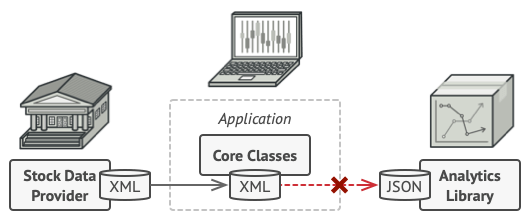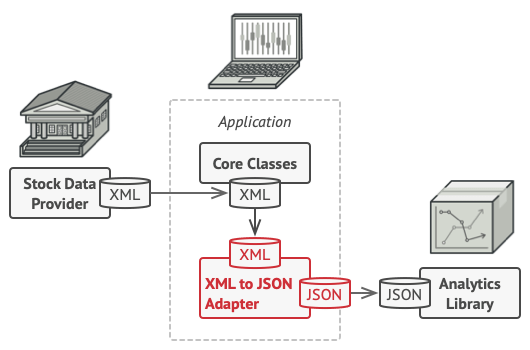Adapter pattern(structual)


- Introducing a intermediate layer between two incompatiable parts.
- The adapter intereacts with both side.
class Computer:
def __init__(self, name):
self.name = name
def __str__(self):
return 'the {} computer'.format(self.name)
def execute(self):
""" call by client code """
return 'execute a program'
class Synthesizer:
def __init__(self, name):
self.name = name
def __str__(self):
return 'the {} synthesizer'.format(self.name)
def play(self):
return 'is playing an electroinc song'
class Human:
def __init__(self, name):
self.name = name
def __str__(self):
return 'the {} human'.format(self.name)
def speak(self):
return 'says hello'
class ClientInterface:
def execute(self):
pass
class Adapter(ClientInterface):
def __init__(self, obj, adapted_method):
""" 不使用继承,使用__dict__属性实现适配器模式 """
self.obj = obj
self._execute = adapted_method
def __str__(self):
return str(self.obj)
def execute(self):
return self._execute()
# 适配器使用示例
def main():
objs = [Computer('Asus')]
synth = Synthesizer('moog')
objs.append(Adapter(synth, synth.play))
human = Human('Wnn')
objs.append(Adapter(human, human.speak))
for o in objs:
# 用统一的execute适配不同对象的方法,这样在无需修改源对象的情况下就实现了不同对象方法的适配
print('{} {}'.format(str(o), o.execute()))
if __name__ == "__main__":
main()
Written on June 18, 2021